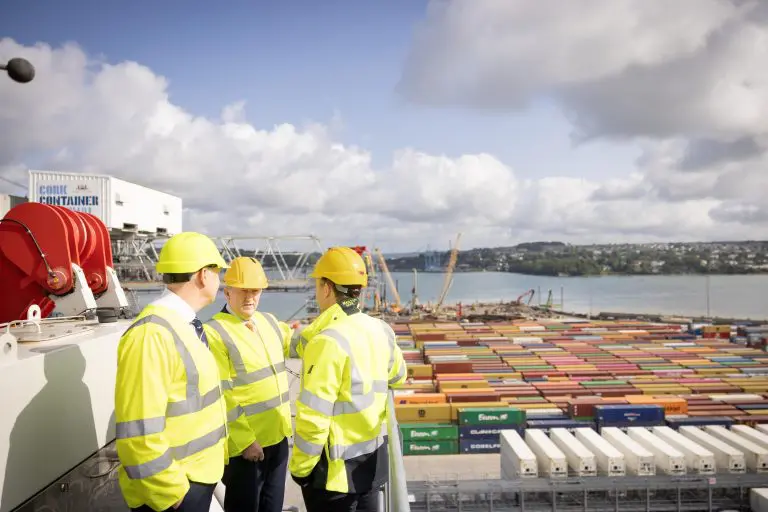Location, location, location is the old and trusted adage of estate agents- but according to the Irish Green Building Council it also holds true when it comes to building green!
Despite the collapse of the construction industry in 2007 thousands of single houses continue to be built on green field sites across the country- often in locations only accessible by car.
The IGBC was recently asked by influential US Green Building Council to identify the most important environmental priorities for new buildings.
The US Council wish to adapt their LEED (Leadership in Energy and Environmental Design) certification system for use in Ireland. LEED is used by the largest US technological and pharmaceutical multinationals in Ireland including Google, and Pfizer to demonstrate the green credentials of their buildings. Unlike the BER ( Building Energy Rating)- which now appear on all property advertisements- LEED looks at much more than just energy use.
It assesses a whole range of environmental issues, such as, how much water is used, the quality of the indoor air and the use of green materials in the buildings.
Importantly, it also considers how easy it is for the workers or occupants to access the building by sustainable transport.
If the building scores well under all these counts the owner get to hang the coveted LEED Gold plaque outside their building. Any developer of commercial property now needs to consider getting certification in LEED or the UK based system BREEAM because of the increasing global evidence of additional asset value generated.
Consequently, a high-profile team of Irish architects, engineers, construction, planning and real estate professionals came to the unanimous decision that the most important consideration for Ireland was to get the building in the right location. Buildings seeking LEED Gold will now get bonus credits for good location in Ireland.
It should be accessible to public transport and at densities where services such schools, shops, and restaurants could be accessed with a short stroll.
According to Donal Mc Daid, a Director in leading engineering company, Arup suburban sprawl is one of the biggest drivers of carbon emissions in Ireland.
“Ireland has experienced significant growth over the past 30 years, in which we witnessed increased affluence and sub-urban development. Private car usage has increased with a growth rate of 104 percent between 1990 and 2011 with seven out of 10 people in sub-urban areas driving to work and the average journey time by car in the Greater Dublin Area increasing by over 25 percent over the same period reflecting greater congestion and longer journeys.”
Overall transport energy has increased in Ireland by 120 percent from 2019 ktoe in 1990 to 4448 ktoe in 2011.
The issue is particularly relevant at the moment as South Dublin County Council are currently considering lowering density requirements as part of a review of the Adamstown development planIndeed poor office location can have an adverse effect on the carbon profile of a building if workers are forced into car dependency to access their work place.
According to Pat Barry of the IGBC this outcome was particularly evident in the Government decentralisation scheme where offices were moved from accessible city centre locations to car dependant locations such as the new OPW headquarters in Trim, Co Meath.
In this case the carbon emissions of the rural resistant architects of the OPW have gone through the roof as they faced into a planet battering 86km daily round trip.
Michael Donohoe director of Colliers international added.
“With the combination of office rents again being more competitive and changing occupier patterns already evident, many large occupiers are showing a preference to locate in cities – key influences for city location decisions are high quality connectivity, access to a range of public transport links and for the ‘Generation Y’ in the workplace, availability of more affordable apartment living. In addition to access to good public transport links, modern agile businesses view cities as generally being more ‘connected’ which in addition to office space, cities effectively provide access to a ‘Third Space’ – e.g. free WiFi in café’s/bars, libraries, stations, etc. The urban location therefore facilitates ‘working anywhere’, improving productivity whilst working flexibly.” Mr Barry said: “The carbon footprint of occupants of even these super energy efficient passive houses built in car dependent locations may be far higher than those living in older leakier houses in non-car dependant town and city locations”
“The best way to reduce carbon emissions in Ireland will be to retrofit stock in good locations with good densities rather than seeking to build new energy efficient buildings in car dependant locations” he added.
Research from a study conducted in Canada in 2007 has shown that as houses are built further from services such as schools, shops and public transport the occupant’s carbon footprint could be up to a whopping two and half times greater than for non-car dependant town dwellers in more compact, if draughtier dwellings.
Franz Fuerst of the University of Cambridge will discuss this issue in a European context when he presents his research on German towns and their suburbs at the Better Building Conference in Dublin next month.
Ireland‘s largest construction symposium -which is sponsored by Ecocem the low carbon concrete provider- will be held in Croke Park on April 24.
The event will see estate agents join architects, investors, and policy makers to discuss how we can green the built environment in Ireland.
David O’Flynn, Business Development Manager with Ecocem added “Planners need to permit increased density in built up areas where appropriate transport links are available”








